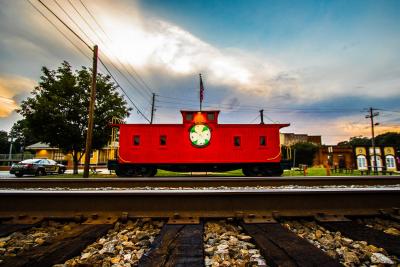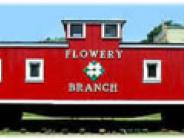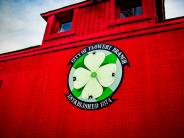-
Your Government
-
Column 1
- Departments
- Administration
- Community Development
- Community Relations
- Finance
- Human Resources
- Police
- Public Works
- Water/Wastewater
Column 2
- City Council
- Message from the Mayor
- Meet your Council
- Elections
- Council Meetings
- Agendas and Minutes
- Meeting Schedule
- Offices Closed
-
-
Our Community
-
Column 1
- About Flowery Branch
- Community Profile
- Code of Ordinances
- Historic Preservation District
- Historic Caboose
- Historic Train Depot
- History of Flowery Branch
- Main Street Businesses
Column 2
- Visitors
- 3rd Friday Block Parties
- Annual Events
- Flowery Branch Bay Park
- Flowery Branch Cemetery
- Flowery Branch Farmers Market
- Places to Eat
- Your Atlanta Falcons
Column 3
- New Resident
- Banking
- Churches
- Find your Legislator
- Post Office
- Schools
- Library
- Utilities
-
-
Helpful Resources
-
Column 1
Column 2
- Events & Activities
- Calendar
- 2023 Holidays - Offices Closed
- 2023 Council Meeting Schedule
Column 3
-
-
How Do I
-
Column 1
- Apply For
- City Facility Rentals
- Employment Opportunities
- Water/Sewer Service
- Pouring License
- Garage Sale Permit
- Business License
- Solicitor’s License
- Building Permit
- Sign Permit
- Burn Permit
Column 2
- Contact
- Animal Control
- Code Enforcement
- Police Non-Emergency
- Find
- Forms and Applications
- Records/Documents
- Staff Member
- Ordinance/Code
- Voting Information
- Water and Sewer Rates
Column 3
-
Historic Caboose a Must See
The Origin of the Caboose
The origins of both the car and the word are surrounded as much by legend as by fact. One popular version dates the word back to a derivation of the Dutch word “kabuis,” which referred to a ship’s galley. Use of cabooses began in the 1830s, when railroads housed trainmen in shanties built onto boxcars or flatcars.
Located at the North end of Main Street in downtown Flowery Branch, the city’s historic Caboose can easily be seen from Atlanta Highway (SR 13). Once an active caboose, the piece now sits as a museum to days gone by.
The Cupola
The addition of the cupola–the lookout post atop the car–is attributed to a conductor who discovered in 1863 that he could see his train much better if he sat atop boxes and peered through the hole in the roof of his boxcar.
Uses for the Caboose
The caboose served several functions, one of which was as an office for the conductor. A printed “waybill” followed every freight car from its origin to destination. The conductor kept the paperwork in the caboose. The caboose also carried a brakeman and a flagman. In the days before automatic air brakes, the engineer signaled the caboose with his whistle when he wanted to slow down or stop. The brakeman would then climb out and make his way forward, twisting the brake wheels atop the cars with a stout club. Another brakeman riding the engine would work his way toward the rear. Once the train was stopped, the flagman would descend from the caboose and walk back to a safe distance with lanterns, flags, and other warning devices to stop any approaching trains.
Once underway, the trainmen would sit up in the cupola and watch for smoke from overheated wheel journals or other signs of trouble.
The Conductor’s Home Away From Home
It was common for railroads to assign a caboose to a conductor for his exclusive use. Conductors took great pride in their cars. The men decorated their car interiors with many homey touches, including curtains and family photos. Some of the most important additions were ingredients for cooking meals that became a part of American folklore. Augmented with such comforting features, the caboose served as a home away from the trainmen’s home terminals.
The Beginning of Obsolescence
Cabooses became a uniquely American tradition. Overseas, their use had always been rare, or was eliminated many years ago. Even in the United States, technological change began eliminating the need for cabooses before the turn of the century.
The spread in the 1880s of the automatic air brake system invented by George Westinghouse eliminated the need for brakemen to manually set brakes. The air brakes were soon followed by the use of electric track circuits to activate signals, providing protection for trains and eliminating the need for flagmen. Friction bearings were replaced by roller bearings, reducing overheated journals and making visual detection by smoke an unlikely event.
Trains became longer, making it difficult for the conductor to see the entire train from the caboose, and freight cars became so high that they blocked the view from the traditional cupola. The increasing heaviness and speed of the trains made on-board cooking hazardous and unnecessary.
New labor agreements reduced the hours of service required for train crews and eliminated the need for cabooses as lodging. Cabooses, when used at all, were drawn from “pools” and no longer assigned to individual conductors.
Eventually, electronic “hotbox” and dragging equipment detectors, which . would check moving trains more efficiently and reliably than men in cabooses, were installed along main lines, and computers eliminated the conductors’ need to store and track paperwork.
The Caboose’s Replacement
Today, the ends of freight trains are monitored by remote radio devices called “End of Train” devices, or EOTs. The small boxes fit over the rear coupler and are coupled into the train’s air brake line.
The EOT radios information to the engineer regarding the brake pressure at the rear of the train, whether or not the last car is moving, and whether or not the flashing red light is working (activated at night by a sensor).



